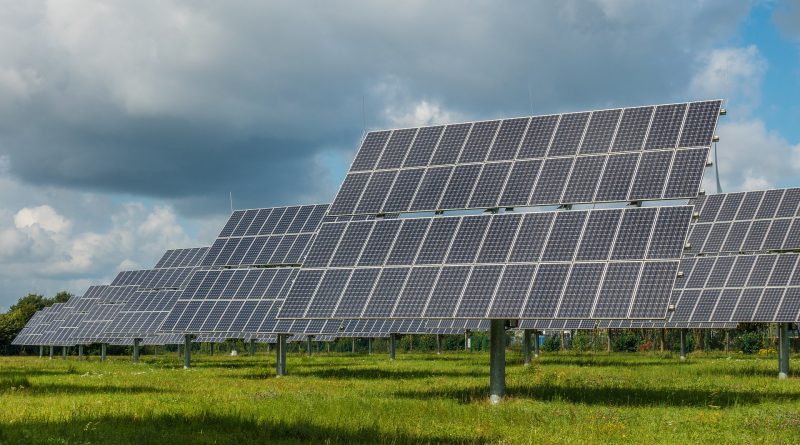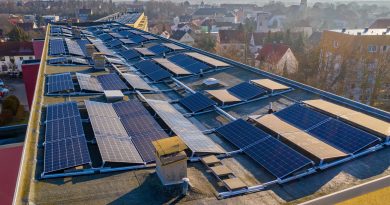On-Grid Solar PV System: Harnessing Solar Power Efficiently
Solar energy has become an increasingly popular choice for power generation due to its environmental friendliness and cost-effectiveness. Among the different types of solar power systems, on-grid solar PV systems have gained significant attention. These systems not only allow homeowners or businesses to generate their own electricity but also enable them to sell any excess power back to the grid. In this blog, we will delve deeper into the concept of on-grid solar PV systems, exploring their advantages, components, and installation process.
What is an On-Grid Solar PV System?
An on-grid solar PV system, also known as a grid-tied solar system, is a renewable energy system that seamlessly integrates solar power generation with the existing utility grid. Unlike off-grid systems that rely solely on solar power, on-grid systems utilize both solar power and grid power. This interconnectedness offers several advantages to users, making it an attractive option for those in urban areas or regions with a reliable electricity grid.
Advantages of On-Grid Solar PV Systems
1. Cost Savings: One of the primary benefits of on-grid solar PV systems is the ability to save on electricity bills. By generating their own solar power, users can significantly reduce their dependency on the grid, leading to long-term cost savings.
2. Net Metering: On-grid systems typically incorporate net metering. Net metering allows users to sell excess electricity generated by their solar panels back to the grid, further reducing their electricity costs. This feature incentivizes users to maximize their solar power generation, creating a win-win situation for both homeowners and the energy grid operators.
3. Minimal Battery Requirement: Unlike off-grid solar systems, on-grid systems do not require large-scale battery installations. As they can rely on the grid for power during periods of low or no solar generation, homeowners or businesses can minimize the upfront costs associated with batteries, making the overall system more affordable.
4. Low Maintenance: On-grid solar PV systems are generally low maintenance. As there is no need to monitor battery levels or perform frequent battery replacements, the upkeep of the system becomes hassle-free. Periodic cleaning of solar panels and an annual inspection are typically sufficient to ensure optimal performance.
Components of an On-Grid Solar PV System
1. Solar Panels: The cornerstone of any on-grid solar PV system is the solar panels. These panels, often made of crystalline silicon cells, convert sunlight into direct current (DC) electricity.
2. Inverter: Once the solar panels generate DC electricity, it needs to be converted into alternating current (AC) power, which is what most appliances and the grid utilize. An inverter, therefore, plays a crucial role in an on-grid system by converting the DC electricity into AC electricity.
3. Grid Connection: The grid connection, facilitated through a bi-directional electrical meter, enables power exchange between the solar system and the grid. This connection allows users to both consume power from the grid and export excess solar power to it.
4. Mounting Structures: To ensure optimal solar panel placement and maximum sunlight exposure, on-grid solar PV systems require sturdy and durable mounting structures. These structures support the solar panels, securely fastening them to the roof or the ground.
Installation Process
The installation of an on-grid solar PV system involves several steps that ensure a seamless integration of solar power generation with the existing grid.
1. Site Assessment: Before installation, a professional solar energy company assesses the site’s solar potential, considering factors such as shade analysis, roof tilt, and azimuth angle. This assessment determines the optimal location and capacity of the solar PV system.
2. Permitting and Approvals: The next step involves obtaining necessary permits and approvals from the local authorities. This ensures that the installation complies with safety regulations and grid interconnection requirements.
3. System Design: Once the necessary approvals are obtained, the solar energy company designs the system layout, accounting for factors like the number of solar panels, inverter capacity, and electrical wiring configuration. This design ensures the system’s optimal performance.
4. Installation and Commissioning: The solar panels and mounting structures are installed as per the pre-determined design. The inverter and other electrical components are connected, and the entire system is subjected to rigorous testing to ensure it meets safety standards and grid interconnection requirements.
5. Grid Connection and Net Metering: After successful commissioning, the electrical meter is replaced with a bi-directional meter, allowing for the seamless exchange of electricity between the solar system and the grid. This enables accurate monitoring of imported and exported electricity, facilitating net metering.
Conclusion
Embark on a sustainable energy journey with SolarClue®’s on-grid solar PV systems, an attractive option for harnessing the power of the sun while enjoying the benefits of a reliable electricity grid. Our systems not only reduce electricity bills but also enable participation in net metering programs, minimizing maintenance requirements. As solar power gains momentum, an on-grid solar PV system from SolarClue® becomes a pathway towards a greener and more sustainable future. Make the switch to clean energy today and join the movement towards a brighter and eco-friendly tomorrow with SolarClue®.
Frequently Asked Questions
An on-grid solar PV system is a solar power setup that is connected to the local electrical grid, allowing for the generation and use of solar electricity alongside the conventional grid supply.
Solar PV panels convert sunlight into direct current (DC) electricity through the photovoltaic effect.
Unlike off-grid systems, on-grid solar PV systems are continuously connected to the electrical grid, enabling seamless power exchange between the system and the grid.
Inverters convert the DC electricity produced by solar panels into alternating current (AC), making it compatible with the electrical grid and usable in homes and businesses.
Typically, on-grid systems do not need energy storage in batteries. Excess energy is fed back into the grid, and the grid acts as a virtual storage system.
Excess electricity generated by on-grid systems is often fed back into the grid. Users may receive credits for this surplus energy through net metering.
On-grid systems are designed to shut down during power outages to prevent sending electricity into the grid, prioritizing the safety of utility workers.
Yes, on-grid systems can be easily expanded by adding more solar panels and inverters to increase capacity as energy needs grow.
Net metering allows users to receive credits for excess electricity they contribute to the grid, offsetting their overall electricity costs.
On-grid systems reduce reliance on traditional energy sources, lowering greenhouse gas emissions and promoting a more sustainable energy mix.




